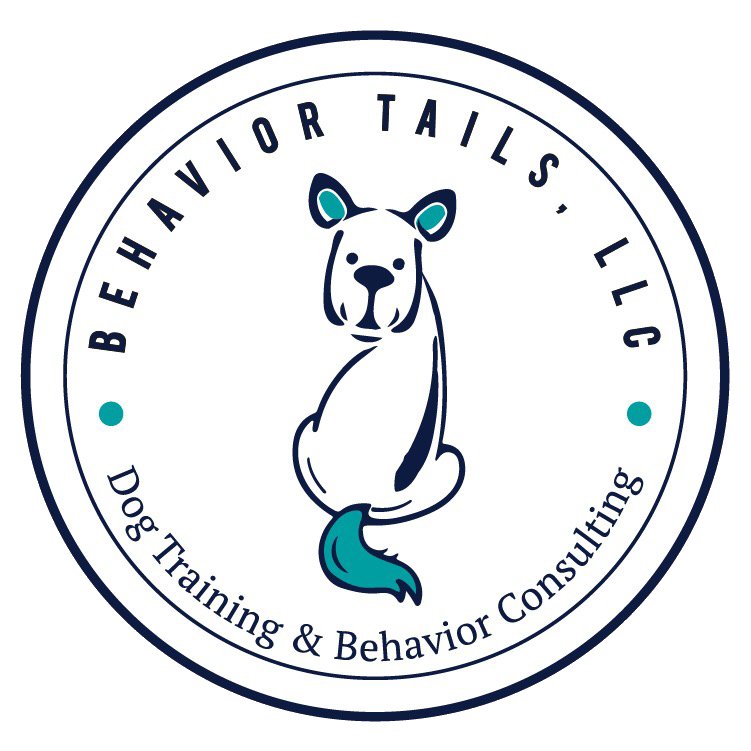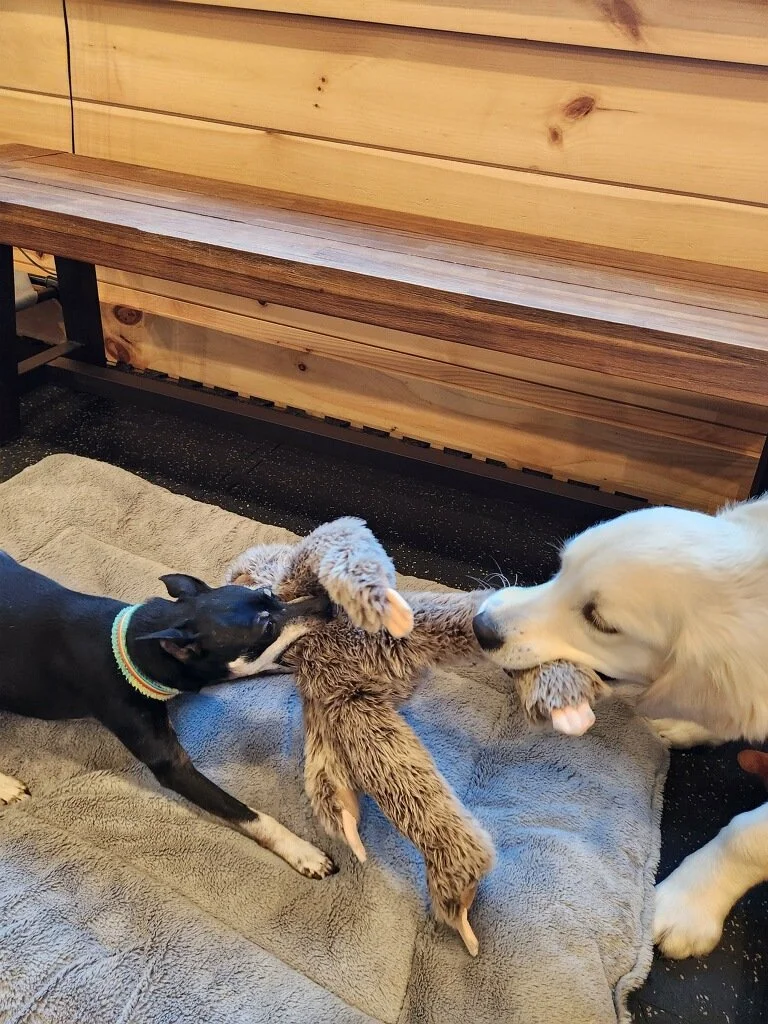Define SMART Goals & Training Plans & Skill Tracking
January is National Train Your Dog Month! YAY!! We love this month! A great time to look at learning some new behaviors or maybe altering unwanted behaviors. Is there something that happens daily that could be easier? Standing still for putting the leash on? Or do you maybe just want to learn some new tricks and fun games to enjoy with your dog?
In dog behavior there is a lot that we can alter with training. There are also the animals own limitations. Genetics can account for a dog only being able to go so far in Training compared to a dog who has been bred to do that job. If you consider on a scale from 1-100 is a dogs ability to do a skill. Genetically a border collie may have that full range so with training they could get to 100 fairly easily. Same with a corgi or a cattle dog. But then you take a bloodhound, you may only ever be able to get to 30 because genetically they haven’t been bred to do an eye stalk or know how to move around the animal to be herded in a way that controlled their movement. We can potentially train some of that but inherently the dog may not possess the ability to eye stalk ever due to its overriding genetic desire to put their nose to the ground and track via scent. What does this matter?
All dogs are individuals and we need to consider that our goals in Training reflect what the dog is willing and able to offer us. I can create more confidence and comfort on a shy dog but it may never become the life of the party. I can take a super social active dog and teach him hope to relax and not interact with everyone who walks by but good preposition will always be to engage so I need to offer more rewards and more support than a dog who tends to prefer to stay off too the side. Some dogs will find some skills easier while others really struggle. The key odd to find what your dog finds valuable and naturally reinforcing so we can be mindful in Training. Sitting still may be too hard of a starting skill for a dog who is very energetic or not barking when playing with other dogs might be the hardest thing a vocal dog has ever done. We need to take these things into consideration when creating our goals and training plans.
Now to look at Training plans and goals for 2024.
Let’s start with a quick reflection on 2023. What are your take away messages from last year. Fun times with your dog? Things you’re grateful for? Things you want to change about living with your dog? What action would you like to take? And any reminders for yourself as you progress through 2024?
Now we can further define our goals for 2024. Keeping in mind your dog and your unique situation you can define goals that are SMART.
What are SMART goals?
Specific
Measurable
Achievable
Relevant
Time
Specific:
instead of saying I want a dog who jumps less or barks less or doesn’t pull on the leash. Let’s focus on what we want them to do instead and be specific of when the behavior is occurring. For example: I want my dog to be quiet by the time my visitors enter my home. I want to talk to a friend that I run into on my walk with my dog while my dog lays calmly at my side. I want to improve my dogs come when called.
Measurable:
This party would need you to be able to measure your current situation so that we can set the goal. When visitors arrive what odd the current situation. Time the barking. Write down what is currently happening. I’d like to be able to talk to the neighbor for 5 minutes while my dog lays at my feet.
Achievable:
Is your dog capable of the behavior you want. A bloodhound may not be able to be reliable on a recall so we may always need to use a long line as a safety measure. A dog who has a bite Record with children should not be put in situations where he is a risk to children around him so any goals would need to be reflective of safety measures required to prevent risk to the children. A dog who doesn’t enjoy affection from strangers may never want to be touched by visitors to your home so the goal may need to reflect what it will take to keep your dog safe and comfortable instead of looking at them being “social”.
Relevant:
Set goals that are relevant to your life with your dog. If your dog struggles to share toys with other dogs but you never have them around other dogs that goal may not be relevant to your needs. Instead you may work on recall so that if you find yourself around other dogs you can call your dog back to you until you can remove the tips from the situation.
Time:
This means both looking at the overall timeline for reaching this goal but also the steps along the way. Break down the steps and let’s look at each step along the way.
Here is an example to help you break it down:
Current problem: pulling on leash
Desired outcome: enjoy walking together with the dog being able to offer attention when asked
Specific: don’t want to rely on physical strength to hold the dog back on the leash. Want to walk the lake comfortably and be able to pass people and dogs without using physical strength to limit the dogs movement.
Measurable: currently dog offers zero attention. Is unable to offer any attention to owner while out on a walk. Walks consist of pulling the entire time. Only control is when owner shortens leash and physically moves the dog using leash pressure.
Achievable: is the dog big enough to pull you over? We may need to start with a harness or head halter to make sure everyone is safe while we work on training these behaviors. Do you have access to locations to practice this skills? Does your dog have medical limitations? Physical limitations?
Relevant: pet parent wants to walk the lake regularly
Time: break down of skills and timeline for progression. This could be time it takes or duration of behavior or even how often you are going to commit to practice. I’m going to train for 5-10 minutes every day.
Here is a worksheet for you to define your SMART goals:
Now that we have reflected on last year & have set SMART goals for next year, let’s create a TRAINING & ACTION PLAN.
It’s one thing to know your goals but another to be able to define the steps to get to that goal.
If you are dealing with unwanted behaviors and creating new behaviors you will want to go through this Training Plan so that you can pinpoint where/why/how/when you are seeing the unwanted behaviors and create the step by step solutions.
You’ve defined your problems and goals
Now create MANAGEMENT and ROUTINES to stop the dog from practicing the unwanted behaviors
Create the new SKILLS
Begin to EXPAND SKILLS by moving outside the home (yard, driveway, porch)
Build value and FLUENCY for these skills & GENERALIZE to new locations
Lastly, here is a skill tracker to keep your training sessions on track. You can write the skill you are currently working on and mark off each day you work on these skills.
Tips:
Keep sessions short (aim for 5 minutes of high rate of reinforcement training)
If your dog is struggling, look at the D/D/D and make it easier (you may have made it too hard too fast)
Have fun
If you’re struggling, we’re here to help.
Sometimes its the value of reinforcement or sometimes the steps are too big a leap from the last step. We can help you define these steps and break it down into doable pieces.






